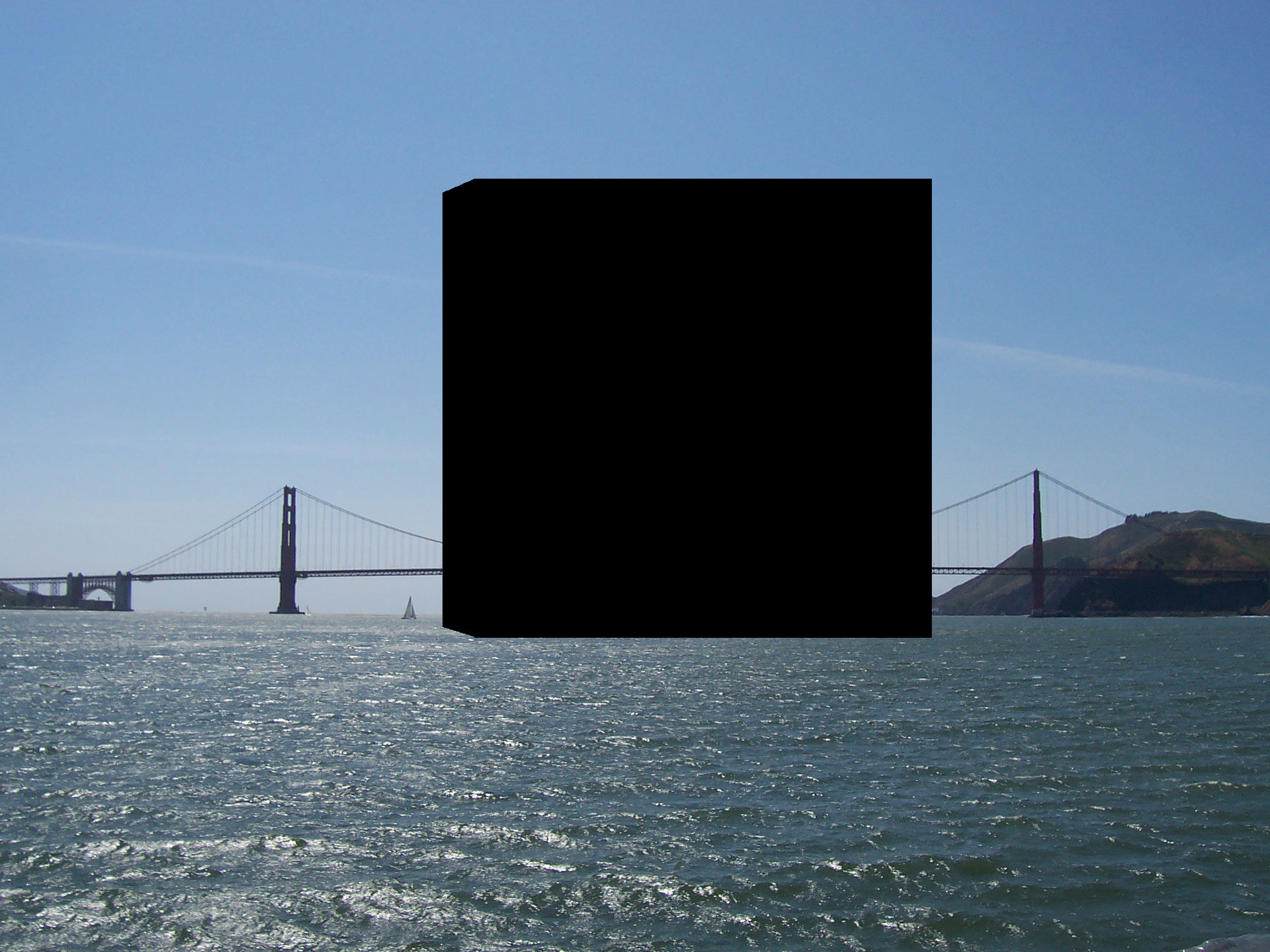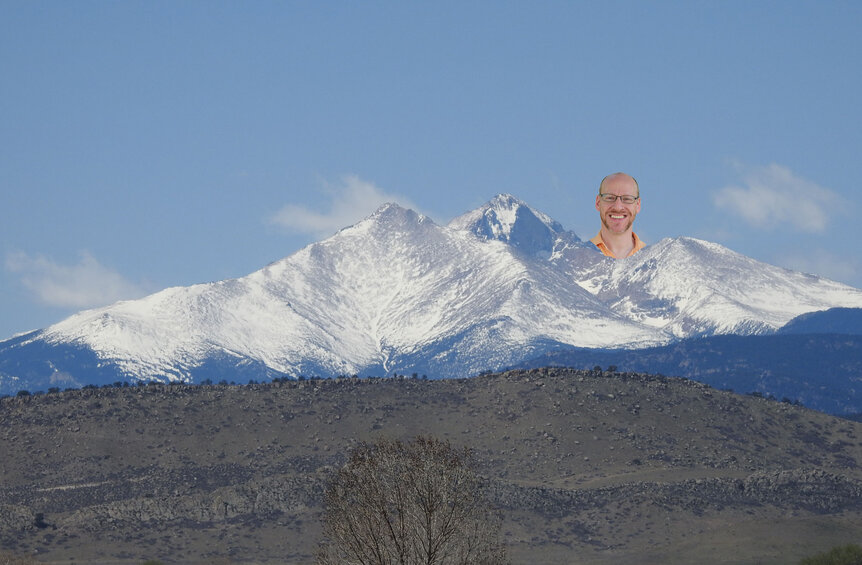Create a free profile to get unlimited access to exclusive videos, sweepstakes, and more!
The Human Cube: The volume of humanity

Here’s a weird thought.
We know there are about 7.6 billion people on Earth (and growing). That’s a lot! Written out, that’s 7,600,000,000 human beings breathing, thinking, reading social media, doing… just existing.
That’s such a big number it’s nearly impossible to visualize. To wit: If you lined everyone up head to toe (assuming an average height of 170 centimeters, which is close enough for estimation), we’d stretch about 13 million kilometers. That’s 30 times the distance to the Moon.
Hmmmm. I have an idea for a cheap way to make a space elevator…
It's also enough to stretch around the world well over 300 times. That's a lovely thought, though it might make traffic more difficult.
So yeah, that’s a long line, but — and this is the big question, perhaps literally — if you took all the humans on Earth and smooshed them together, how much volume would that take up?
That might seem tough to answer — humans are somewhat irregular in shape, so you can’t just assume we’re a cylinder or a sphere or a triaxial ellipsoid and use some mathematical formula to approximate our volume — but in fact if you know a little trick it’s easy.
The trick is this: Humans are almost exactly the same density as water.
You probably have experienced this yourself. If you jump in the pool (or some other sufficiently large body of water), you float, but just barely. If you take a deep breath you’ll rise, and if you let it out you’ll sink; so we must be very close to water’s density. And you’ve probably heard we’re mostly water, so it’s not really surprising we’re about the same density.
Water has a density of 1 gram per cubic centimeter (or cc; for comparison, 1 cc is very roughly about half the volume of the tip of your pinky to the first knuckle; or, less anatomically and more geekily, about the size of a six-sided die). So if you know your mass in grams, that’s equal to your volume in cc! I have a mass of about 75 kilograms, or 75,000 grams. So I have a volume of 75,000 cc (or, if you prefer, 75 liters or 75 million cubic millimeters; I love the metric system).
The average human has a mass of about 62 kg, or 62,000 grams. That means the average volume of a human is 62,000 cubic centimeters. To get the total volume of the human race, just multiply that by 7.6 billion: 470 trillion cc.
That’s a weird amount to grasp. It’s equal to 470 million cubic meters.
Nope. Still too hard. How about this: 0.47 cubic kilometers.
Ah, that’s better; a little less than half a cubic km. That's a big cube! At least by everyday standards. I have to admit, that's smaller than I would have guessed. If you stacked everyone together into a Human Cube (hmmm, I should trademark that), it would be about 770 meters on a side. That’s not much! Shape us into a conical stack and stick it in the Rocky Mountains and it would be lost; a mountain that small would be lost amongst the true giants. You wouldn’t even notice us. Well, except for the fact we’re made of gloppy organs and such and not very hard granite, so the ensuing events would be extremely nasty. But still, I think you get my meaning. [Note for picky math pedants: The average human may be more or less than the number I used, but a small uncertainty won’t make much difference in the dimensions of the cube, because you’re taking the cube root of the volume, so even a 10% difference in mass hardly changes the dimensions.]
It occurs to me that if we could all assemble together, Voltron-like, then we’d make a single megahuman (really, 7.6 gigahuman) nearly 3.4 kilometers tall. That’s a big human.
Still, while it’s fun to smash humans together and see what we can make, when I did this math I had no idea what to do with this information except that it’s kinda cool and the numbers are fun to play with. But is it useful in any way?
I needed someone whose brain works differently than mine. So I sent a note to Randall Munroe asking him what he thought knowing the volume of the Human Cube™ might be good for. He immediately (I mean immediately) replied back saying you could use it to calculate how much sea level rise you’d get if everyone on Earth suddenly became a pearl diver.
I love my friends.
I thought about this for a moment and realized this is easier to calculate than you might think. Volume = area x height, right? If we submerge the Human Cube™ into the ocean, the amount the sea level goes up is the volume of the Human Cube™ divided by the surface area of the ocean!
The area of the Earth covered by water is about 362 million square kilometers. 0.471 cubic kilometers / 362 million square km = 1.3 x 10-9 kilometers, or 0.0000000013 km. That’s pretty much equal to one micron, a millionth of a meter.
Um, yeah. That’s not much. That’s 1/100th the width of a human hair, or a stack of atoms about 10,000 atoms high, depending on the atom (we’re mostly hydrogen, oxygen, and carbon, which vary in size but are very roughly 10-4 microns in diameter).
Hey, that’s actually interesting! If you took apart every human on Earth atom by atom and spread them out so they are just barely touching, you could easily cover the whole planet many times over.
Interesting, yes, but also ewwwww. Human carpet. I am not trademarking that.
Incidentally, Randall did a “what if?” article similar to this, and notes that sea level rise is about 3 millimeters per year. This is due to global warming, which is both melting ice and causing thermal expansion in the oceans (i.e. when you heat water it expands).
3 mm / yr = 3,000 microns / year = 8 microns / day. That means global warming adds more to sea level rise in four hours than dumping all the humans into the ocean does. Huh.*
When I talked to him, Randall also said the volume of humans could be used to calculate the average number of dark matter particles in a human. That’s true! But it’s not so easy to get that number. We know the average density of dark matter in the solar system (that is, mass per volume, so call it grams per cc) because we know how much overall gravitational effect it has on the galaxy, and that tells us its density, but we don’t know the mass of the individual particles (because let’s face it we don’t know what dark matter even is yet), so we can’t say for sure how many particles are in you right now.
But we can take a stab at it. The density of dark matter locally is very roughly 5 x 10-25 grams per cc. Multiplying by the average volume of a human (62,000 cc) means you personally have about 3 x 10-20 grams of dark matter in you at any given moment.
That’s funny to me. In the Universe as a whole, dark matter outmasses regular matter by roughly 6 to 1. But in you, normal matter outmasses dark matter by 2 x 1024! That’s two septillion times. Of course, the Universe as a whole is a lot bigger and a lot less dense than you are, which tips the scales very severely the other way when you step back far enough. No offense.
3 x 10-20 grams is a very small number. For comparison, it’s about 15,000 times the mass of a proton. All together, this means that the entire human race has about 2.3 x 10-10 grams of dark matter inside us collectively all the time. I don’t think we’d make a very good detector. There goes my NSF proposal.
So the Human Cube™ does have some use after all, at least as a thought experiment! And there may be more ways to use this volume in fun examples, but you know what?
Enough. My brain is tired (probably due to having 7 x 10-22 grams of dark matter in it). So I think I’m done.
Incidentally: I love playing with numbers like this, and I’m decent enough at coming up with fun ways to manipulate them, but Randall outstrips me like a supernova overtaking a whelk. And it should be noted that something like this happens every single time I talk to Randall. This should not surprise you.
P.S. A version of this article first appeared in my Bad Astronomy Newsletter. If you subscribe you'll see some ideas playing out long before they go public. Plus lots of other stuff.
* I’ll add that it’s actually not this simple. If the sides of the oceans (where they meet continents) were vertical walls like in a swimming pool then this math would be simple, but in fact the edges are generally sloped, as you can see at any beach. However, the sea level rise due to submerging the Human Cube™ is so small compared to the area of the oceans that this doesn’t matter. Where it does matter is when you have persistent sea level rise, because day after day, year after year, the volume of the oceans increases enough that the surface area of the ocean increases even more rapidly, encroaching on land more rapidly. This is why islands and beaches are rapidly disappearing as our oceans expand. Randall pointed me toward this wonderful NOAA page about the hypsographic curve, which I will have to investigate more thoroughly.



















